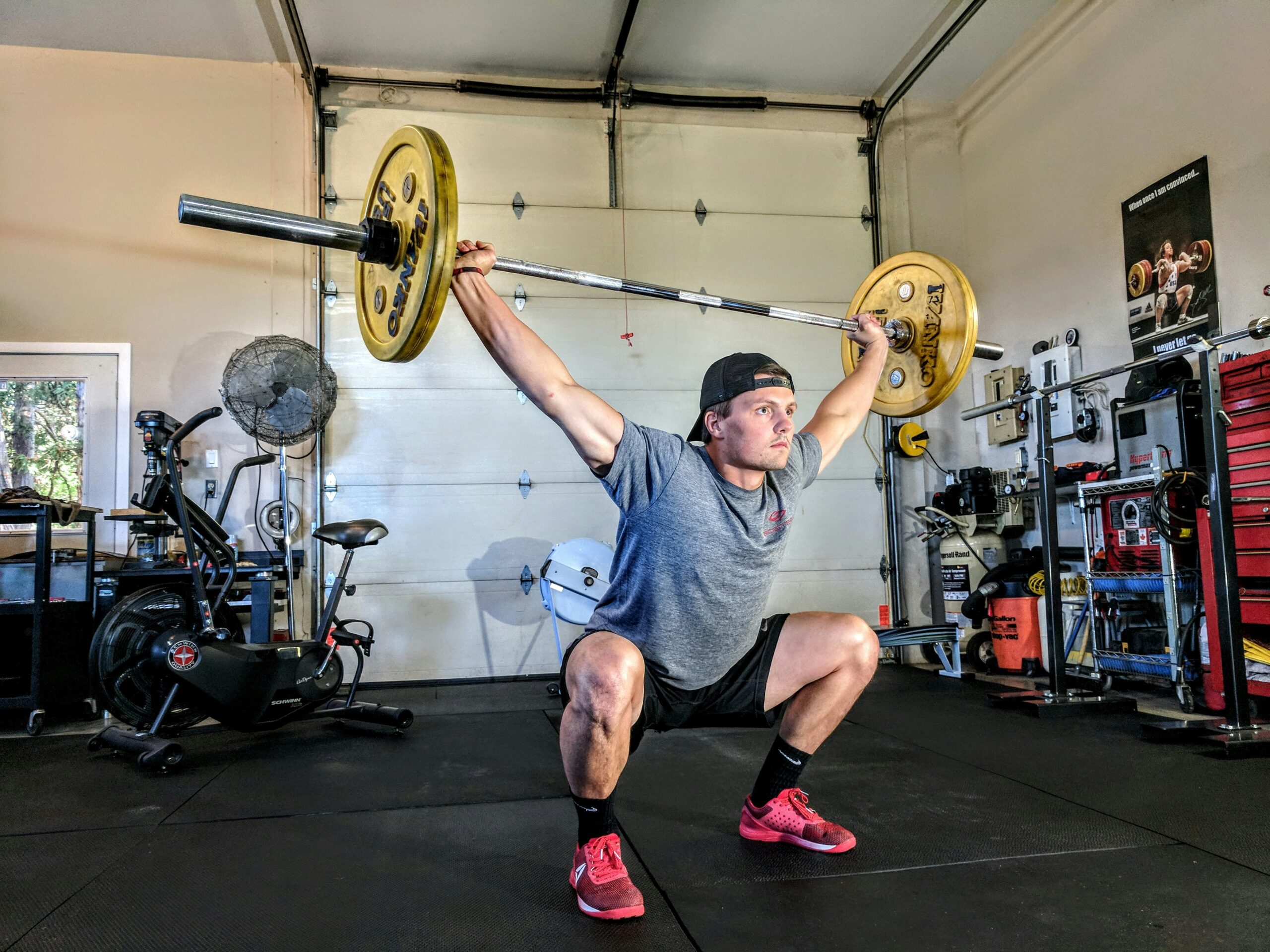If you're dealing with the discomfort of a swollen prostate, you may be wondering if exercise could provide some relief. The good news is that regular physical activity has been found to have numerous benefits for prostate health. In this article, we will explore the potential effects of exercise on reducing prostate inflammation and improving overall prostate function. So, if you're looking for natural ways to manage your symptoms and take charge of your prostate health, keep reading to discover the potential benefits of incorporating exercise into your routine.

Understanding Prostate Swelling
What is the prostate?
The prostate is a small gland located just below the bladder and in front of the rectum in men. It plays a crucial role in the reproductive system as it produces and stores seminal fluid, which nourishes and transports sperm. The size of the prostate can vary among individuals and may change with age.
What causes prostate swelling?
Prostate swelling, also known as benign prostatic hyperplasia (BPH), is a condition characterized by an enlargement of the prostate gland. While the exact cause of BPH is still unknown, hormonal imbalances, particularly a rise in dihydrotestosterone (DHT) levels, are believed to play a significant role. Age is also a contributing factor, as the incidence of prostate swelling tends to increase with age.
Symptoms and diagnosis of prostate swelling
The symptoms of prostate swelling can vary from person to person but commonly include frequent urination, weak urine flow, difficulty initiating urination, and the feeling of incomplete emptying of the bladder. These symptoms can significantly impact an individual's quality of life. Diagnosis of prostate swelling typically involves a physical examination, a urinary flow test, and a measurement of prostate-specific antigen (PSA) levels in the blood. Further diagnostic procedures, such as ultrasound or prostate biopsy, may be necessary to rule out other conditions or evaluate the severity of the swelling.
Typical Treatments for Swollen Prostate
Medication options
Medication is often the first line of treatment for prostate swelling. Alpha-blockers, such as tamsulosin, help relax the muscles in the prostate and bladder neck, improving urine flow. 5-alpha reductase inhibitors, like finasteride, work by reducing the production of DHT, which can help shrink the swollen prostate over time. Combination therapy, using both alpha-blockers and 5-alpha reductase inhibitors, may provide optimal results in certain cases.
Surgical interventions
In cases where medication fails to provide adequate relief or when the prostate enlargement becomes severe, surgical interventions may be necessary. Transurethral resection of the prostate (TURP) is a common surgical procedure in which excess prostate tissue is removed to alleviate symptoms. Other less invasive procedures, such as transurethral incision of the prostate and laser therapy, offer alternative options for patients who may not be suitable candidates for TURP.
Radiation and hormone therapies
Radiation therapy, using targeted beams of radiation, is primarily used to treat prostate cancer. However, it can also be used in specific cases of prostate swelling, particularly when medications and surgical interventions are not viable options. Hormone therapy, which aims to reduce the production of testosterone, may also be recommended to shrink the prostate. However, it is usually reserved for advanced cases or when other treatments have not been effective.
Understanding the Role of Exercise in General Health
Exercise and cardiovascular health
Regular exercise has a myriad of benefits for overall cardiovascular health. Engaging in aerobic exercise, such as brisk walking, cycling, or swimming, can improve heart function, lower blood pressure, and reduce the risk of cardiovascular diseases such as coronary artery disease and stroke. This is achieved by strengthening the heart muscle, improving blood circulation, and reducing the buildup of plaque in the arteries.
Exercise impact on mental health
Exercise is not only beneficial for physical health but also has a positive impact on mental well-being. Engaging in regular physical activity can help reduce symptoms of depression, anxiety, and stress. Exercise promotes the release of endorphins, also known as “feel-good” hormones, which can improve mood and foster a sense of relaxation and happiness. Additionally, exercise provides an opportunity for social interaction and can enhance self-esteem and body image.
Exercise and inflammatory processes
Chronic inflammation has been linked to various health conditions, including prostate swelling. Regular exercise can help regulate the body's inflammatory processes by reducing chronic low-grade inflammation. Physical activity has been shown to lower levels of pro-inflammatory markers while increasing anti-inflammatory markers. By reducing inflammation, exercise may help mitigate the risk of developing conditions associated with systemic inflammation, including prostate swelling.
Exercise and its Impact on Prostate Health
Impact of exercise on hormone levels
Exercise can have a positive influence on hormone levels, which may indirectly affect the health of the prostate gland. Physical activity has been shown to promote optimal hormone balance in the body, including reducing levels of DHT, a hormone implicated in prostate swelling. Regular exercise can also help regulate insulin levels, which could have indirect effects on hormone regulation and influence prostate health.
Effect of exercise on inflammation
Inflammation is a key factor in the development and progression of prostate swelling. Exercise has been found to have anti-inflammatory effects on the body, potentially reducing the risk of developing BPH or alleviating symptoms associated with an enlarged prostate. By lowering overall inflammation levels, exercise may create a healthier environment for the prostate gland.
Impact on general wellbeing and prostate health
Regular exercise contributes to overall health and well-being, and this extends to prostate health as well. Engaging in physical activity improves blood circulation, strengthens muscles, and enhances immune function. These factors collectively support the body's ability to maintain prostate health and potentially reduce the risk of prostate swelling. Additionally, exercise can improve urinary function, helping to alleviate symptoms associated with prostate swelling.

Types of Exercise Beneficial for Prostate Health
Aerobic exercises
Aerobic exercises, also known as cardiovascular exercises, are essential for prostate health. Activities such as brisk walking, jogging, cycling, and swimming can help improve blood circulation, strengthen the heart, and promote overall cardiovascular fitness. Aim for at least 150 minutes of moderate-intensity aerobic exercise per week or 75 minutes of vigorous-intensity exercise, spread throughout the week.
Pelvic floor exercises
Pelvic floor exercises, commonly referred to as Kegel exercises, can help strengthen the muscles that support the prostate and bladder. These exercises involve contracting and relaxing the muscles used to stop the flow of urine. By strengthening the pelvic floor muscles, men can improve urinary control and potentially alleviate symptoms associated with prostate swelling. Consult with a healthcare professional for guidance on performing Kegel exercises correctly.
Strength training exercises
Strength training exercises, such as weightlifting or resistance training, offer numerous benefits for prostate health. These exercises help build and maintain muscle mass, which is crucial for overall physical fitness. Strengthening the muscles surrounding the prostate and the pelvic area can provide support to the gland and potentially alleviate symptoms of swelling. Include strength training exercises at least twice a week, targeting major muscle groups.
Studies and Research on Exercise and Prostate Health
Summaries of prominent studies
Several studies have explored the relationship between exercise and prostate health. One study published in the Journal of Urology demonstrated that men who engaged in moderate to vigorous exercise had a lower risk of developing BPH compared to sedentary individuals. Another study published in the Journal of Clinical Oncology revealed that vigorous physical activity was associated with a reduced risk of prostate cancer, which may indirectly impact prostate health.
Contradictions and controversies
While many studies suggest that exercise can positively impact prostate health, there are still some contradictions and controversies in the field. Some studies have failed to establish a direct link between exercise and prostate swelling. Factors such as study design, population size, and variations in exercise regimens could contribute to these discrepancies. More research is needed to fully understand the potential benefits of exercise for prostate health.
Current research directions
In recent years, research has focused on exploring the specific mechanisms through which exercise affects prostate health. Studies are investigating the impact of exercise on hormonal balance, inflammatory markers, and genetic factors related to prostate swelling. The goal is to provide more targeted exercise recommendations and develop a deeper understanding of the underlying processes involved in maintaining a healthy prostate.

Limitations and Risks of Exercise
Possible injuries during exercise
As with any physical activity, there is a risk of injuries during exercise. Overexertion, poor technique, or inadequate warm-up can lead to strained muscles, sprains, or even more severe injuries. It is essential to start any exercise regimen gradually, listen to your body, and seek professional guidance when needed. Precautions should also be taken to prevent falls or accidents, especially during high-impact activities or exercises that require balance.
Risk of overexertion
While exercise is beneficial for prostate health, overexertion can have adverse effects. Pushing yourself beyond your limits or ignoring signs of fatigue can lead to exhaustion, injury, or unpleasant consequences such as rapid heartbeat or dehydration. It is crucial to strike a balance between challenging yourself and allowing for adequate rest and recovery. Consult with a healthcare professional to determine the appropriate exercise intensity and duration based on your individual fitness level and health condition.
Future complications related to exercise
While exercise can have immediate benefits for prostate health, it is essential to consider potential long-term effects. Some exercises with repetitive motions or high impact may exert strain on the pelvic area, potentially contributing to future complications such as bladder or prostate issues. Engage in a variety of exercises and consult with a healthcare professional to determine a well-rounded approach to exercise that minimizes the risk of future complications.
Exercise Plans for Patients with Swollen Prostate
Precautions to take before starting an exercise regimen
Before initiating any exercise regimen, it is advisable to consult with a healthcare professional, particularly if you have a swollen prostate or other underlying medical conditions. They can provide personalized advice and guidance based on your specific situation. Additionally, it is essential to warm up adequately before exercising, wear appropriate clothing and footwear, and stay hydrated throughout your workout.
Recommended exercises
For individuals with a swollen prostate, a combination of aerobic exercises, pelvic floor exercises, and strength training exercises is recommended. Engaging in 30 minutes of moderate-intensity aerobic exercise, such as brisk walking or cycling, most days of the week can promote cardiovascular health. Pelvic floor exercises, focusing on the muscles used to control urinary flow, should be performed daily. Strength training exercises, targeting major muscle groups, should be done at least twice a week, with a proper warm-up and cool-down routine.
Alterations Based on the severity of the condition
The severity of the swollen prostate may influence the level of exercise intensity and the specific exercises recommended. For individuals with more severe symptoms or complications, such as urinary retention, it may be necessary to modify the exercise routine or seek guidance from a physical therapist specializing in pelvic floor exercises. The goal is to tailor the exercise plan to the individual's needs, ensuring that it is safe and effective in managing the swollen prostate.
Role of Diet and Lifestyle in Managing Swollen Prostate
Foods to avoid
While exercise is an essential component of managing swollen prostate, dietary choices also play a crucial role. Certain foods can exacerbate symptoms or contribute to prostate inflammation. Avoiding or limiting the intake of processed foods, red meat, high-fat dairy products, caffeine, and alcohol can help manage prostate swelling. These dietary modifications may help reduce inflammation and improve urinary symptoms.
Foods to incorporate
Incorporating certain foods into your diet can promote prostate health and potentially alleviate symptoms of swelling. Foods rich in antioxidants, such as fruits and vegetables, can help combat inflammation in the body. Additionally, consuming foods high in omega-3 fatty acids, such as fatty fish (salmon, trout) and flaxseeds, may have anti-inflammatory properties. Including plant-based proteins, whole grains, and healthy fats, like those found in nuts and avocados, can contribute to a well-balanced diet and support overall health.
Lifestyle changes for a healthy prostate
In addition to exercise and dietary modifications, certain lifestyle changes can support prostate health. It is important to maintain a healthy weight, as obesity is associated with an increased risk of prostate swelling. Managing stress levels through relaxation techniques, such as meditation or yoga, can also be beneficial. Avoiding tobacco, as smoking has been linked to prostate issues, and practicing good hygiene habits, such as regular emptying of the bladder, can help maintain a healthy prostate.
The Benefit of Holistic Management for Swollen Prostate
The combination of medication, exercise, and diet
A holistic approach to managing swollen prostate involves combining various treatment modalities. Medication, exercise, and dietary modifications work synergistically to address both the symptoms and underlying causes of prostate swelling. Medication helps alleviate symptoms, while exercise and diet promote prostate health, reduce inflammation, and enhance overall well-being. These complementary approaches increase the likelihood of positive outcomes and provide a more comprehensive approach to managing the condition.
Role of mental health counseling
Mental health counseling can be an essential component of holistic management for swollen prostate. The diagnosis of prostate swelling can be emotionally challenging, and individuals may experience anxiety, stress, or depression as a result. Counseling or therapy can provide valuable support, helping patients cope with the emotional aspects of the condition and develop strategies for managing any psychological impact it may have on their daily lives.
Success rate and benefits of a holistic approach
Adopting a holistic approach to managing swollen prostate can yield numerous benefits and potentially improve outcomes. By addressing multiple aspects of health, including medication, exercise, diet, and mental well-being, individuals can experience reduced symptoms, improved quality of life, and a better overall prognosis. Additionally, a holistic approach promotes long-term prostate health and may help prevent complications or the progression of the condition.
In conclusion, while prostate swelling can be a challenging condition to manage, exercise and other lifestyle modifications can play a significant role in supporting prostate health. Regular exercise, along with proper medication and a balanced diet, can contribute to reducing symptoms, improving overall well-being, and potentially preventing future complications. It is essential to consult with a healthcare professional, follow personalized exercise plans, and consider a holistic approach to achieve optimal outcomes. By taking proactive steps and making positive lifestyle changes, individuals can work towards a healthier prostate and a better quality of life.

